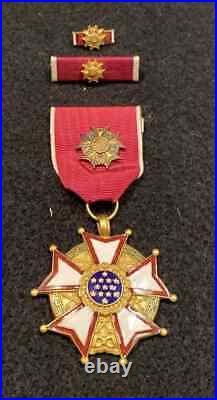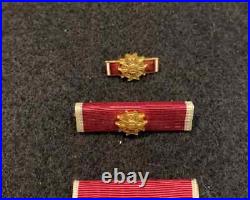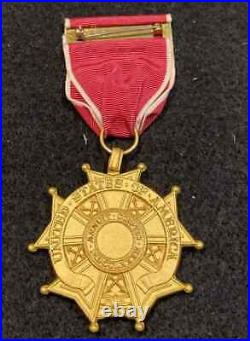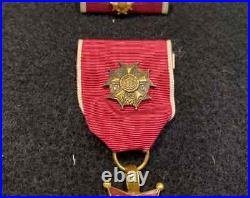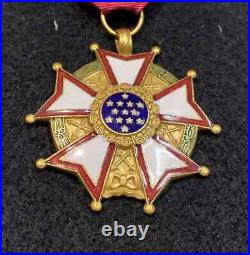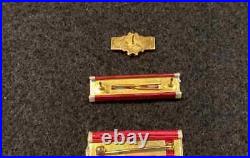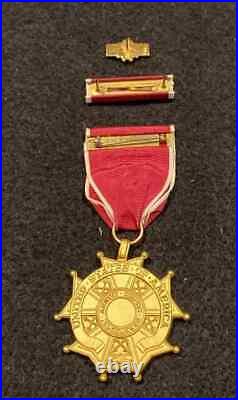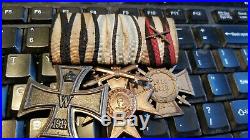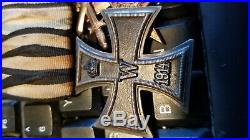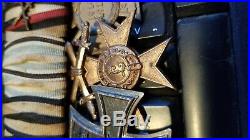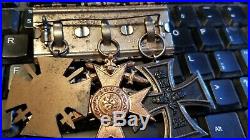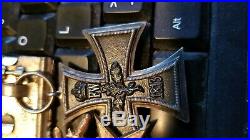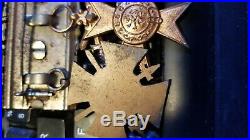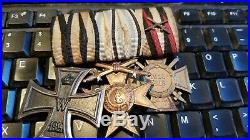PLEASE FOLLOW OUR E BAY STORE. SALE SEE OUR STORE. PLEASE READ WHOLE ADD. We do not want your feed back. We want your repeat business. We get that by posting new items at a fair price. The 8th Division was organized at Camp Fremont. From men of the Regular Army, 3 August 1918. 23rd Machine Gun Battalion. 24th Machine Gun Battalion. 8th Field Artillery Brigade. 2nd Field Artillery Regiment. 81st Field Artillery Regiment. 83rd Field Artillery Regiment. 8th Trench Mortar Battery. 22nd Machine Gun Battalion. 320th Field Signal Battalion. Headquarters Troop, 8th Division. 8th Train Headquarters and Military Police. 11th, 31st, 32nd, and 43rd Ambulance Companies and Field Hospitals. In August 1918, Major General Graves, along with his staff, 5000 men, and 100 officers, was transferred to Siberia. In Russia as part of the intervention in the Russian Civil War. Major General Eli A. Helmick succeeded Graves in command of the division. The overseas movement of the division to Europe commenced on October 30, 1918. The 8th Field Artillery Brigade, 8th Infantry Brigade, 16th Infantry Brigade headquarters, and the 319th Engineer Regiment were the only divisional units to go to France. The 13th and 62nd Infantry Regiments were at sea when recalled after the Armistice. The 12th Infantry did not leave its pre-embarkation point at Camp Mills. Because it was quarantined for Spanish influenza. The troops who did reach France became the garrison of Brest. And assisted in building huge camps for troops about to embark for return to the United States. World War I Victory Medal (United States). World War I Victory Medal. Service between April 6, 1917, and November 11, 1918, or with either of the following expeditions. American Expeditionary Forces in European Russia. Between November 12, 1918, and August 5, 1919. American Expeditionary Forces Siberia. Between November 23, 1918, and April 1, 1920. 36 millimeters in diameter. Is a winged Victory. Standing full length and full face. On the reverse is the inscription The Great War for Civilization and the coat of arms for the United States. Surmounted by a fasces. And on either side the names of the Allied and Associated Nations. The medal is suspended by a ring. 1 3/8 inches in length and 36 millimeters in width, composed of two rainbows. And having the red in the middle, with a white thread along each edge. And Secretary of the Navy. The Great War for Civilization. Mexican Border Service Medal. Army of Occupation of Germany Medal. The World War I Victory Medal known prior to establishment of the World War II Victory Medal. In 1945 simply as the Victory Medal was a United States. Designed by James Earle Fraser. Of New York City. Under the direction of the Commission of Fine Arts. Award of a common allied. Service medal was recommended by an inter-allied committee in March 1919. Each allied nation would design a’Victory Medal’ for award to their military personnel, all issues having certain common features, including a winged figure of victory. On the obverse and the same ribbon. The Victory Medal was originally intended to be established by an act of Congress. Authorizing the medal never passed, however, thus leaving the military departments to establish it through general orders. Published orders in April 1919, and the Navy. In June of the same year. The Victory Medal was awarded to military personnel for service between April 6, 1917, and November 11, 1918, or with either of the following expeditions. The front of the bronze medal features a winged Victory. Holding a shield and sword on the front. The back of the bronze medal features “The Great War For Civilization” in all capital letters curved along the top of the medal. Curved along the bottom of the back of the medal are six stars, three on either side of the center column of seven staffs wrapped in a cord. The top of the staff has a round ball on top and is winged on the side. The staff is on top of a shield that says “U” on the left side of the staff and “S” on the right side of the staff. On left side of the staff it lists one World War I Allied. Country per line: France. On the right side of the staff the Allied country names read: Great Britain. (spelled with a U instead of an O as it is spelled now), and China.
Posts tagged -see
PLEASE FOLLOW OUR E BAY STORE. SALE SEE OUR STORE. PLEASE READ WHOLE ADD. We do not want your feed back. We want your repeat business. We get that by posting new items at a fair price. The Chief Commander Degree of the Legion of Merit Medal is, on a wreath of green laurel joined at the bottom by a gold bow-knot (rosette), a domed five-pointed white star bordered crimson, points reversed with v-shaped extremities tipped with a gold ball. In the center, a blue disk encircled by gold clouds, with 13 white stars arranged in the pattern that appears on the Great Seal of the United States. Between each point, within the wreath are crossed arrows pointing outwards. The overall width is. The words “UNITED STATES OF AMERICA” are engraved in the center of the reverse. A miniature of the decoration in gold on a horizontal gold bar is worn on the service ribbon. The Commander Degree of the Legion of Merit Medal is, on a wreath of green laurel joined at the bottom by a gold bow-knot (rosette), a five-pointed white star bordered crimson, points reversed with v-shaped extremities tipped with a gold ball. Between each star point, within the wreath, are crossed war arrows pointing outwards, representing armed protection to the Nation. A gold laurel wreath in the v-shaped angle at the top connects an oval suspension ring to the neck ribbon that is. Inches (49 mm) in width. The reverse of the five-pointed star is enameled in white, and the border is crimson. In the center, a disk for engraving the name of the recipient surrounded by the words “ANNUIT COEPTIS MDCCLXXXII”:a combination of the motto from the Great Seal, “He [God] Has Favored Our Undertakings”, with the date for the first award of a US decoration, the Purple Heart. An outer scroll contains the words UNITED STATES OF AMERICA. A miniature of the decoration in silver on a horizontal silver bar is worn on the service ribbon. The neck ribbon for the degree of Commander is. Inches (49 mm) wide and consists of the following stripes. Inch (1.6 mm) white 67101; center. Inches (46 mm) crimson and. Inch (1.6 mm) white. The Officer Degree of the Legion of Merit Medal is similar to the degree of Commander except the overall width is. Inches (48 mm) and the pendant has a suspension ring instead of the wreath for attaching the ribbon. A gold replica of the medal. Inch (19 mm) wide, is centered on the suspension ribbon. The Legionnaire Degree of the Legion of Merit Medal and the Legion of Merit Medal issued to U. Personnel is the same as the degree of Officer, except the suspension ribbon does not have the medal replica. The ribbon for all of the decorations is. Inches (35 mm) wide and consists of the following stripes. Inch (1.6 mm) white; center. Inches (32 mm) crimson; and. The reverse of all of the medals has the motto taken from the Great Seal of the United States. ” (“He [God] has favored our undertakings”) and the date “. (1782), which is the date of America’s first decoration, the Badge of Military Merit. Now known as the Purple Heart. The ribbon design also follows the pattern of the Purple Heart ribbon. Additional awards of the Legion of Merit are denoted by oak leaf clusters. (in the Army, Air Force, and Space Force), and by. Inch (7.9 mm) gold stars. (in the Navy, Marine Corps, and Coast Guard). The sea services (the Navy, Marine Corps, and Coast Guard) awarded the Combat “V”. For wear on the LOM. The Army, Air Force, and Space Force do not authorize the “V” device for the Legion of Merit.
PLEASE FOLLOW OUR E BAY STORE. SALE SEE OUR STORE. PLEASE READ WHOLE ADD. Iron Cross second class, Bavaria Military Merit and Hindenburg Medal of Honor. World War I Iron Cross, 2nd Class. Certificate of award to a musketeer in the Royal Prussian Landwehr, October 1918, a month before the end of the World War I. German soldiers who had been awarded the Iron Cross. Emperor Wilhelm II reauthorized the Iron Cross on 5 August 1914, at the start of World War I. During these three periods, the Iron Cross was an award of the Kingdom of Prussia, althoughgiven Prussia’s pre-eminent place in the German Empire. Formed in 1871it tended to be treated as a generic German decoration. The 1813, 1870, and 1914 Iron Crosses had three grades. Iron Cross 2nd Class Eisernes Kreuz 2. Iron Cross 1st Class Eisernes Kreuz 1. Grand Cross of the Iron Cross. Großkreuz des Eisernen Kreuzes , often simply Großkreuz. Of the medals of each class was identical, the manner in which each was worn differed. The Iron Cross 1st Class employed a pin or screw posts on the back of the medal, and was worn on the left side of the recipient’s uniform, like the original 1813 version. The Iron Cross 2nd Class, and the larger Grand Cross, were suspended from different ribbons: the Grand Cross from a neck ribbon, the 2nd Class from a ribbon on the chest. The usual display of the 2nd Class version was as a ribbon through one of the button holes in the recipient’s tunic. The Grand Cross was intended for senior generals of the Prussian. Or (later) the German Army. An even higher decoration, the Star of the Grand Cross of the Iron Cross. (also called the Blücher Star), was awarded only twice, to Generalfeldmarschall. Gebhard Leberecht von Blücher. In 1813 and to Generalfeldmarschall Paul von Hindenburg. A third award was planned for the most successful German general during World War II, but was not made after the defeat of Germany in 1945. The Iron Cross 1st Class and the Iron Cross 2nd Class were awarded without regard to rank. One had to possess the 2nd Class already in order to receive the 1st Class (though in some cases both could be awarded simultaneously). The egalitarian nature of this award contrasted with those of most other German states (and indeed of many other European monarchies), where military decorations were awarded based on the rank of the recipient. Officers received various grades of that Kingdom’s Military Merit Order. (Militär-Verdienstorden), while enlisted men received various grades of the Military Merit Cross. Prussia did have other orders and medals which it awarded on the basis of rank, and even though the Iron Cross was intended to be awarded without regard to rank, officers and NCOs were more likely to receive it than junior enlisted soldiers. During World War I, approximately 218,000 EKIs, 5,196,000 EKIIs and 13,000 non-combatant EKIIs were awarded. Exact numbers of awards are not known, since the Prussian military archives were destroyed during World War II. The multitude of awards reduced the status and reputation of the decoration. Among the holders of the 1914 Iron Cross 2nd Class and 1st Class was Adolf Hitler. Who served as an Austrian citizen in the Bavarian Army. With the rank of Gefreiter. (lance-corporal), he received these medals for showing bravery on the field of battle. Most photographs of Hitler show him wearing his EKI in standard fashion on his left breast. The Bavarian Military Merit Cross. Was that kingdom’s main decoration for bravery and military merit for enlisted soldiers. It was intended to reward extraordinary merit by non-commissioned officers, soldiers, and lower-ranking officials. It was originally established on July 19, 1866 as the 5th Class of the. Which was the main decoration for bravery and military merit for officers and higher-ranking officials. Civilians acting in support of the army were also made eligible for the decoration. The Military Merit Cross ranked after the Gold and Silver Military Merit Medals. (renamed the Bravery Medals in 1918), which were Bavaria’s highest military honors for NCOs and enlisted soldiers. The cross was a Maltese cross with a center medallion. The obverse of the center medallion had an “L” cipher of King Ludwig II in the center and the word “MERENTI” on the ring. The reverse had a Bavarian lion with the date of founding, “1866″, on the ring. The center medallion was enameled (the original Military Merit Cross was distinguished from the Knight 2nd Class of the Military Merit Order only by having silver instead of blue enameled arms). The first recipient appears to have been Gendarm Johann Winter, who received the Military Merit Cross in the Armee-Befehl (Army Order) of August 20, 1866. The Bavarian Military Merit Cross underwent three major revisions. In February 1891, awards with swords were authorized to distinguish wartime awards, whether for bravery or military merit, from peacetime awards. This was made retroactive for wartime awards from the Austro-Prussian War of 1866 and Franco-Prussian War of 1870-71. In 1905, the statutes of the Military Merit Order were revised and the Military Merit Cross was divided into two classes. The former Military Merit Cross became the Military Merit Cross 1st Class, and a new second class was created which had no enamel on the medallion. The distinction in classes was based on the rank of the recipient. In 1913, another revision of the statutes of the Military Merit Order divided the Military Merit Cross into three classes. The old non-enameled 2nd Class became the 3rd Class and was changed from silver to bronze. The old 1st Class became the 2nd Class. The new 1st Class was identical to the 2nd Class except that it was gilt rather than silver. In addition, all classes were authorized to be awarded with a crown. The crown could be used for a second award to an NCO or soldier who already had received a particular class and whose rank precluded award of a higher class, or to recognize greater merit. There were then effectively 12 combinations: 3 classes each with or without crown, and each with or without swords. This doubled when one takes into account that there were two possible ribbons, one for soldiers and one for officials (Beamtenband). World War I broke out the following year, and the Military Merit Cross became Bavaria’s main decoration for bravery and merit by enlisted soldiers in that war, roughly equivalent to Prussia’s Iron Cross. (except unlike the Iron Cross, the classes of the Military Merit Cross were awarded based on rank). According to one source, the total number of awards of all classes was 380,976. Approximately 290,000 were of the 3rd Class with Swords and approximately 73,000 of the 3rd Class with Crown and Swords, the two lowest grades. The Military Merit Cross became obsolete with the fall of the German Empire and the Bavarian Kingdom in 1918, although the Bavarian government continued to process awards up to 1920. After the end of World War I, the newly formed nation Finland bought medals from all over the world because they lacked proper industry and military honor yet. They bought 339 Military Merit Crosses from Germany and got 7 Iron Cross medals and 332 Bavarian Medals, 299 of these were given out to soldiers after World War II and the rest were either melted down or put in museums, only a handful remain today, twelve of which are privately owned such as the 3rd Class with Swords owned by Adolf Hitler. (3rd Class with Swords) – Bavarian soldier; later Waffen SS. (1st Class with Swords on the Ribbon for War Merit) – Bavarian military official, later Minister-President of Bavaria (194654 and 196062). (3rd Class with Swords) – Bavarian artillery soldier, later Chancellor. (3rd Class with Swords) – Bavarian Gefreiter. And later dictator of the Third Reich. (2nd Class with Swords) – German flying ace of World War I. Max Ritter von Müller. (3rd Class with Crown and Swords) – German flying ace of World War I. (2nd Class with Swords) – Bavarian pilot for an artillery spotting unit, later head of Gestapo. Max von Boehn (General). (1st Class with Swords) General World War I. The Honour Cross of the World War 1914/1918. Das Ehrenkreuz des Weltkriegs 1914/1918. , commonly, but incorrectly, known as the. President of the German Republic, by an order dated 13 July 1934, to commemorate service of the German people during the. This was Germany’s first official service medal for soldiers of. Who had taken part in the war, and where they had since died it was also awarded to their surviving next-of-kin. Shortly after its issuance, the government of. Declared the award as the only official service decoration of the First World War and further forbade the continued wearing of. German Free Corps awards. On any military or paramilitary uniform of a state or. The Honour Cross was awarded in three forms. For front-line veterans, with swords. For non-combatant veterans, without swords. For surviving widows and parents of fallen participants in the war, without swords. The Honour Cross was modelled on the reverse side of the War Commemorative Medal of 1870/71. The medal awarded to combatants (the Frontkämpferkreuz) displayed a laurel wreath encircling a medallion, with the dates “1914 1918″. Crossed swords are between the arms. The Honour Cross for non-combatants has no swords and a wreath of oak leaves. Both crosses are in bronze. The Honour Cross for Next-of-Kin (commonly known as the Widows Cross), was finished in black. The Honour Cross was worn suspended from a ribbon with black edge stripes, two white stripes, two black stripes and a red stripe in the middle between them. The ribbon for the Honour Cross for Next-of-Kin had these colours in a different order, having a white edge stripes, with two black stripes, white stripes on either side of a red stripe in the middle. They were frequently worn with the ribbon fashioned into a bow, with a pin on the back, which the mother or widow in question attached to her clothing. The application for this award had a time limit, which expired at the end of 1942. Each award came with an Urkunde , or certificate, which indicated which form the award took. The certificates for the next-of-kin crosses came in two types: those for widows were titled Ehrenkreuz für Witwen (Honour Cross for Widows), those for parents Ehrenkreuz für Eltern (Honour Cross for Parents). The award was ranked above other service and occupation medals, but below other awarded combat medals. The number of awards given was. For combatants 6,202,883. For non-combatants 1,120,449. For widows 345,132. For parents 372,950. Total 8,041,414. By a decree dated 30 November 1938, the State Minister of the Interior introduced these awards into the Ostmark. The name of Austria after it was annexed. By 1940, it had also been approved for persons of German heritage from seized lands of the Sudetenland. Danzig, Saar and Memel. Awarding of the cross to war participants of German heritage continued after the deadline for applications had closed within the previous boundaries of Germany. Such Honour Crosses were still being awarded as late as 1944. For all attached military personnel outside these regions, the Führer. Through the ordinance of 30 June 1942, had already ordered approval of these awards. The item “3- WW1 GERMAN MILITARY MEDAL RACK L -SEE STORE SALE -AUCTIONS -COMBINE SHIPP” is in sale since Monday, October 21, 2019. This item is in the category “Collectibles\Militaria\WW I (1914-18)\Original Period Items\Germany\Medals, Pins & Ribbons”. The seller is “bigjeffnola” and is located in Madisonville, Louisiana. This item can be shipped worldwide.
- Country/Region of Manufacture: Germany
- Featured Refinements: German Medal








